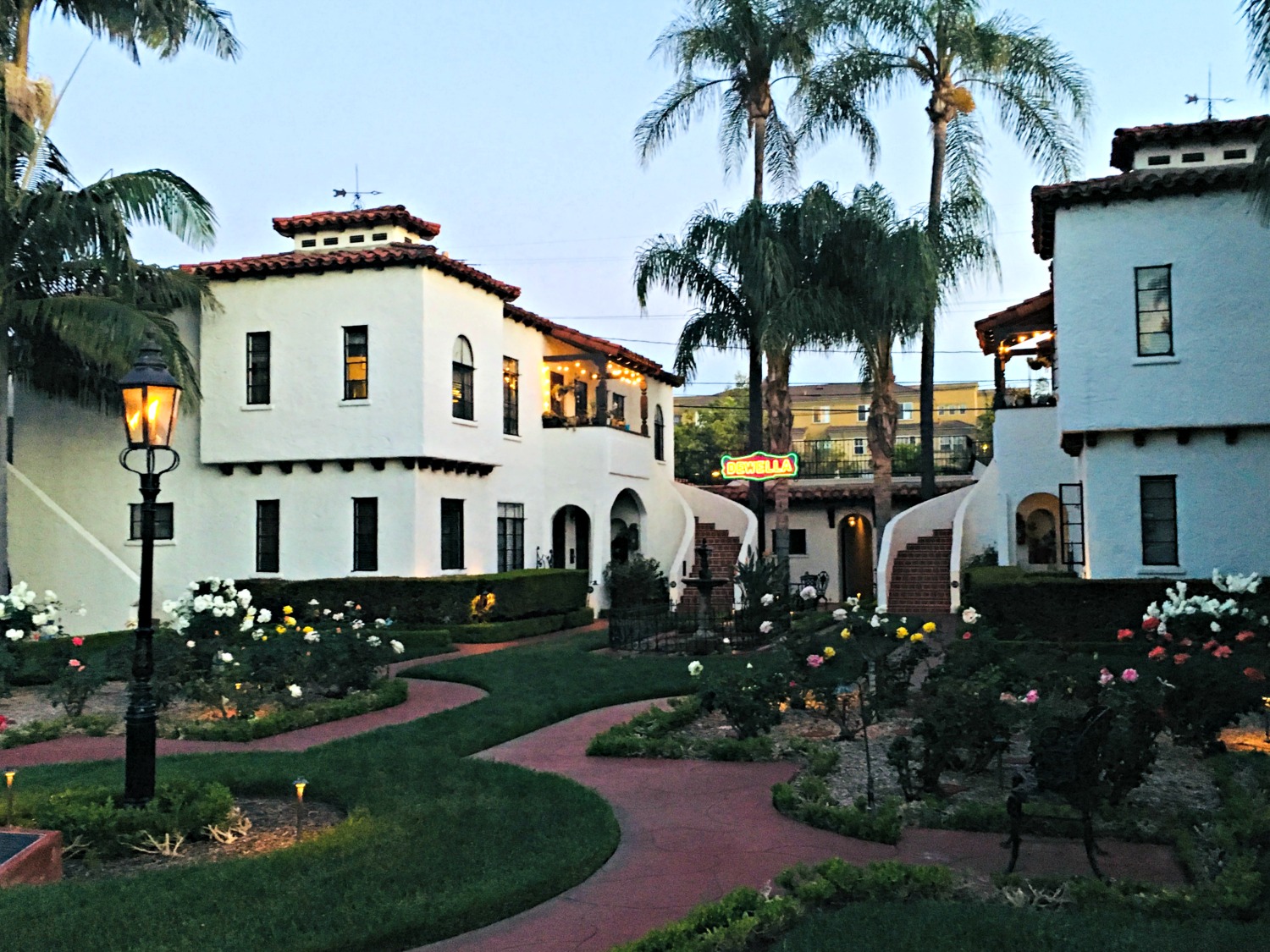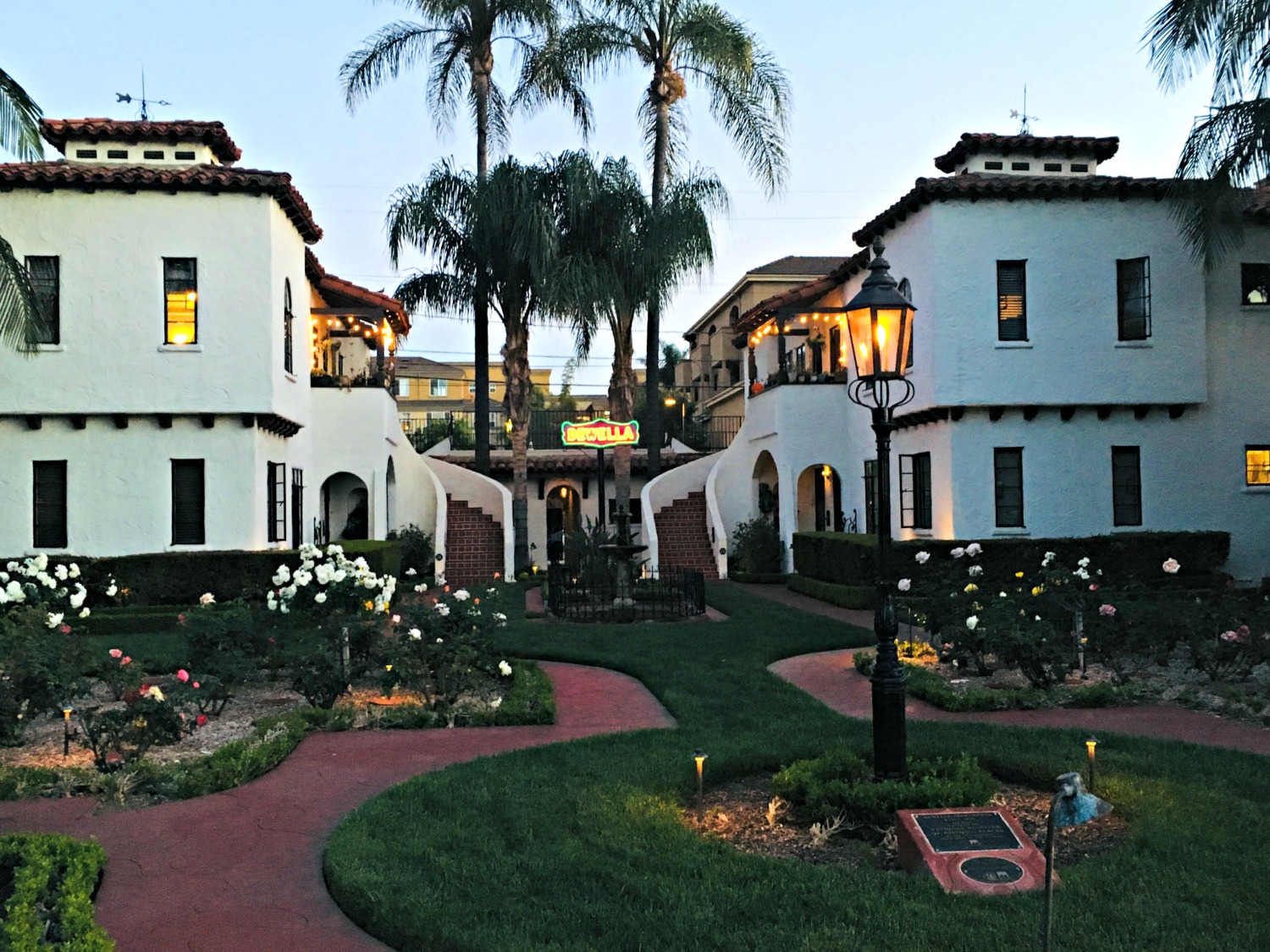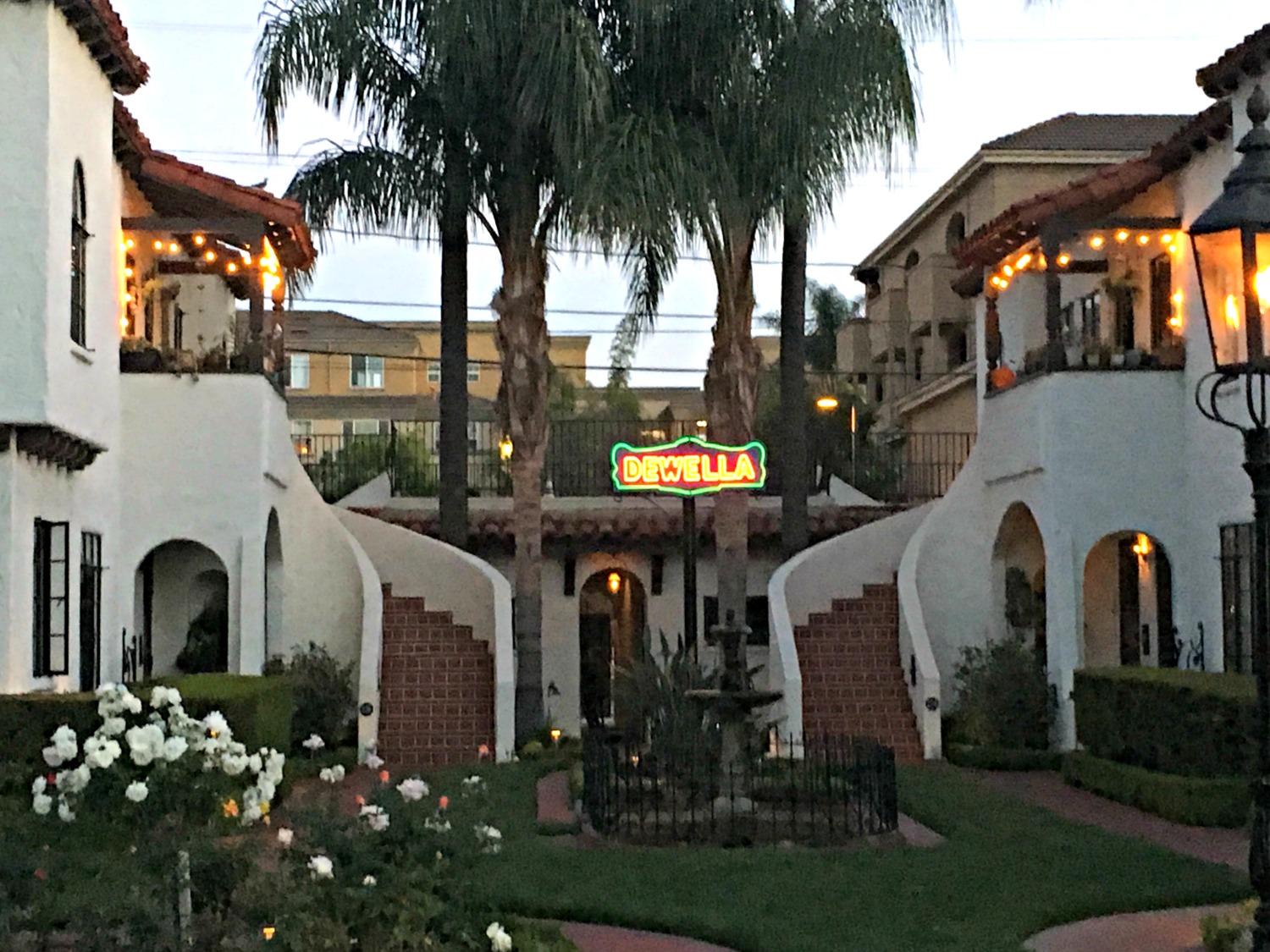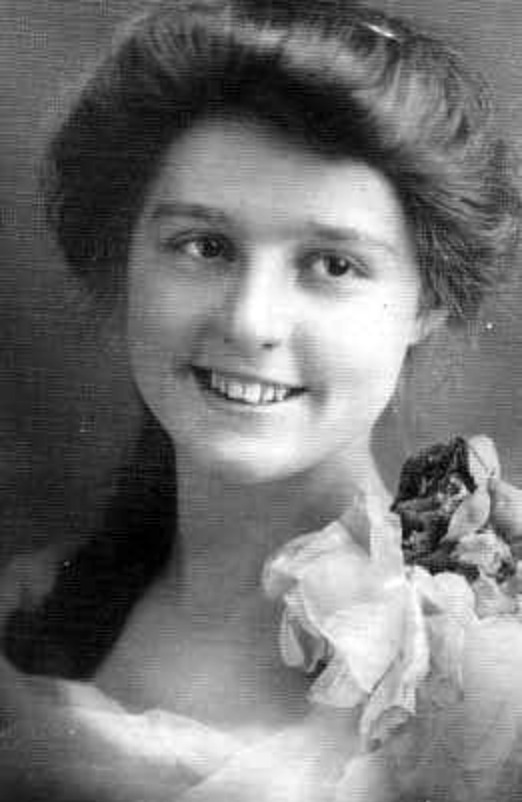The Dewella Apartments
234-236 E. Wilshire Avenue, Fullerton, California
This perfectly symmetrical Spanish Colonial Revival two-story courtyard apartment building in Fullerton is so well-preserved and maintained, it’s like you’re looking at a 1930s movie set, in color. If you linger long enough, you might see Carole Lombard leaning over a wooden balustrade chatting with Myrna Loy, as Gary Cooper stops to tie his shoe on one of the iron benches before strolling up the red-cement path. Called the Dewella Apartments, the two-story, eight-unit structure was built in 1929 with funding by Herman Henry and Edna Bruns, Iowa transplants who eyed an investment opportunity and responded to Fullerton’s need for housing during its oil and agricultural boom.
The Bruns hired a local, Ora Vinton Noble, to design and build the Dewella. Noble, a fellow Iowan, situated the garden court-style building on four lots near downtown Fullerton. A unique reversal of the standard Southern California bungalow court, the Dewella features matching two-story bookend structures on each side of a central, rear, single-story building.
Honoring a Daughter
It’s written in the deed that the Art Deco neon sign, illuminating the name, Dewella, must stay on site. That glowing neon honors the Bruns’ only daughter, who married the brother of a sister glee club member from her Iowa high school and who died in 1921, just three months after giving birth to her first and only child, Earl L. Seaburg Jr. The memorial apartment of Dewella Bruns Seaburg remains spectacular: identical sweeping staircases, Mission-style turrets, a red tile roof, Monterey-style balconies, and decorative iron architectural elements. A manicured carpet of lawn separates the structure from the street; a parklike, formal landscape features a gas lamppost, central fountain, paths, benches, palm trees, rose shrubs, and other quintessential California plants.
Despite opening just weeks after the 1929 Black Thursday stock market crash, the apartments were rented out within 24 hours, perhaps due to press coverage touting the building’s artistic appeal and modern amenities, like GE refrigerators, electric stoves, telephone niches, built-in cabinetry, and gas fireplaces. The Dewella was a labor of love for the still-grieving Edna Bruns. In addition to contacting the local newspapers about its spectacular design and grand opening, she decorated each unit with hand-selected furniture and carpeting from a Santa Ana department store and sewed the draperies herself.
That sense of respect seems to have been transferred to subsequent owners and renters; the Dewella has undergone few changes and has been expertly and thoughtfully maintained for decades. Its Spanish Colonial Revival architectural details—railings, gates, door hardware, weathervanes, lighting fixtures, and decorative grills—blend beautifully with the large areas of white stucco. It was listed to the National Register of Historic Places in 2008.





